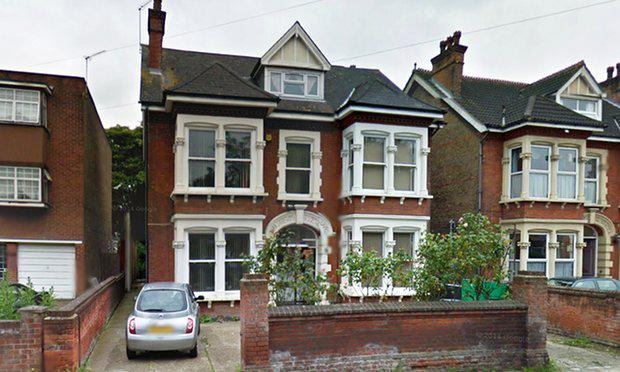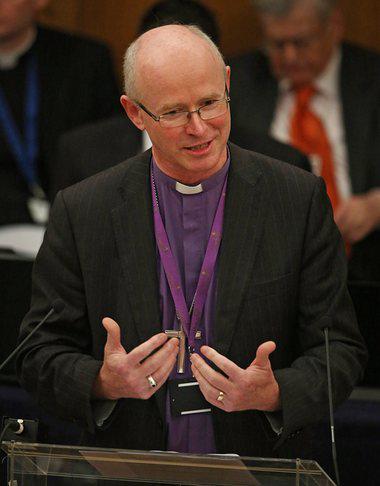|
Church of England apologises for abuses at Kent children's home
By Caroline Davies
The Church of England has offered a “whole-hearted apology” to hundreds of emotionally disturbed adolescent girls placed at a church-run children’s home where residents were drugged, locked up and physically and sexually abused over a 20-year period. A review published on Wednesday presented “harrowing” findings about Kendall House, in Gravesend. It found vulnerable teenagers were over-medicated on psychotropic drugs and tranquillisers to control them, locked in isolation rooms sometimes for days, and in some cases raped, during the 1960s, 70s and 80s. Evidence showed the home was “on the whole, toxic and destructive to the girls placed there”, the report concluded. Warnings about behaviour at the home, run by the dioceses of Rochester and Canterbury, went unheeded for decades, and the church’s initial response was “woeful and inadequate”, said Prof Sue Proctor, who led the review and wrote the report. The Rt Rev James Langstaff, Bishop of Rochester, who commissioned the review, said he was “appalled and saddened” to learn of the pain suffered by those at the home, which cared for 325 teenage girls from the 1960s until its closure in 1986. He said the report was clear there was a “woeful lack of oversight” by the dioceses. “I know that no apologies will take away the pain that has been caused. But, on behalf of the diocese of Rochester, I apologise for that,” he said. The Rt Rev Trevor Willmott, Bishop of Dover and Bishop in Canterbury, echoed the apology, adding: “We know that words cannot undo the failings of the past.” The Gravesend home was run by authoritarian superintendent Doris Law, described as a Christian churchgoer and lay preacher, who has since died, the report said. Its medical regime was overseen by consultant psychiatrist Dr Marenthiran Perinpanayagam, known as Dr Peri, who has also since died. Proctor said there appeared to be an “experimental element” to Dr Peri’s drug regime. The home closed in 1986, by which time 325 girls aged 11-16 had spent time there, their stints ranging from a few days or weeks to more than four years. The review, led by Proctor, who led inquiries into sex abuse by Jimmy Savile at Leeds General infirmary, followed claims of abuse by former residents. Among the claims is the concern that the cocktail of drugs the teenagers were forcibly fed may have caused birth defects in their children. Around 20 legal claims have so far been lodged by former Kendall House residents against the dioceses of Rochester and Canterbury regarding their personal treatment at the home. Some have been settled. More could come forward in the wake of the report. None of the claims have involved birth defects, said Langstaff. The report concluded that Kendall House was “a place where control, containment and sometimes cruelty were normalised”. Every resident was at risk from physical or sexual abuse by staff or visitors, it said. “Girls as young as 11 were routinely and often without any initial medical assessment, given antidepressants, sedatives and anti-psychotic medication. Often these drugs were given in dosages which exceeded usual prescribed adult levels. This served to control their behaviour, placing them in a constant stupor, restricting their ability to communicate or to learn, or have any personal autonomy. “These drugs put them at risk of numerous side effects, many of which were distressing. The effects of the drugs also increased their vulnerability to emotional, physical and, in a smaller number of cases, sexual abuse. “Those that resisted, challenged or overcame the effects of these routinely administered drugs faced sanctions. These included being locked in a room for long periods, and receiving emotionally abusive threats and actions. In a number of cases, even the slightest misdemeanours, the typical features of teenagers’ behaviour, were ‘dealt’ with by physical restraint, sometimes violent, and intra-muscular injections of powerfully sedating medication,” the report said. Residents were troubled teenaged girls, some sent there as a place of safety, others because of anti-social behaviour, some had psychological or behavioural problems. They were supervised by unqualified staff led until 1985 by Law, who had an “autocratic leadership style”. Concerns about the medication regime at Kendall House were raised in the 1970s and 80s by residents, their parents, by some social workers and some employees. “All were either ignored, rebuked, ridiculed or belittled by those in the position of authority in the home,” the report said. When wider concerns about the medication of children in institutions were raised in the press in the 1970s and early 80s, public requests were made to review the regime at Kendall House, but it did not happen. The home was closed down in 1986, after first being subjected to formal regulatory inspection in 1984. Two former residents reported being raped on the premises in the late 70s inside the “locked isolation room”, one allegedly by a male visitor to the home when sedated, the other, allegedly, by several male visitors on different occasions. None of the alleged perpetrators could be identified. The report drew submissions from 20 former residents, a number of their family and friends, and 15 former staff; it accessed 44 original versions of residents’ records. Proctor said the church’s initial response to the claims was “woeful and inadequate”. None of the identified alleged perpetrators of any alleged criminal activity is still alive. It concluded there was “no effective supervision” of the running of Kendall House, described as an “old fashioned and formal” place. The report concluded former residents had experienced “damaging life-long effects” and a “small number of residents went on to attempt suicide after living there”. It called for an apology from the dioceses of Rochester and Canterbury and a thorough examination of safeguarding measures. Among some 19 recommendations is the suggestion the church should make ex-gratia payments to all the former residents who participated in the review “to acknowledge the pain of revisiting the trauma of Kendall House”. Langstaff said that and other recommendations would be considered. David Greenwood, of Switalskis Solicitors, who has represented 15 survivors of abuse at Kendall House in compensation claims, said: “I have been truly shocked at the way in which staff at Kendall House handed out heavy doses of drugs designed to treat schizophrenia to young teenaged girls. Many of the ladies I have represented have suffered poor-quality lives as a result of this treatment. Many have been sexually assaulted and most were physically abused. It was only when the Home Office inspectors advised the church to alter the way they deal with drugs that this treatment was brought to an end.” In 2009, a BBC investigation examined allegations one ex-resident had been given drugs more than 1,200 times at the Kent home. Teresa Cooper told BBC Radio 4’s Today programme she was given tranquillisers, antidepressants and drugs while in the home. The programme claimed 10 ex-residents had gone on to have children with birth defects after being forcibly given cocktails of drugs including tranquillisers during the 1970s and 80s. In 2010, Cooper agreed an out-of-court settlement with the Church of England, which did not accept liability. Her eldest son was born with respiratory difficulties, her second son is blind and has learning difficulties, and her daughter was born with a cleft palate and short lower jaw. Case studiesThe report gives detailed examples of the abuse suffered. One former resident, orphaned in the 1960s, alleged she was touched inappropriately by Law. She also claimed that when she became pregnant by a boyfriend and gave birth, Law advised her to behave, threatening her by saying: “She wouldn’t want anything to happen to him,” adding: “We’ve got a plot in the garden for little babies that have had accidents,” the report stated. Another girl, with behavioural problems, who spent four years there in the 1970s, recalled feeling like a “zombie” because of the cocktail of drugs she was prescribed after Dr Peri called her a “psychopath” believing “medication was essential for her control”. She later spent time in prison and borstal and in psychiatric care, becoming an “alcoholic” and homeless before getting her life back on track. One girl, also from a troubled background and living at Kendall House in the 1980s, was prescribed “crisis medication” when staff would pin her to the floor and forcibly inject her with sedatives to control her behaviour. When she said she had been raped while allowed out on weekend leave, no action was taken. On two occasions she tried to take her own life. She also claimed a male member of staff tried to kiss and touch her.
|
.
Any original material on these pages is copyright © BishopAccountability.org 2004. Reproduce freely with attribution.

